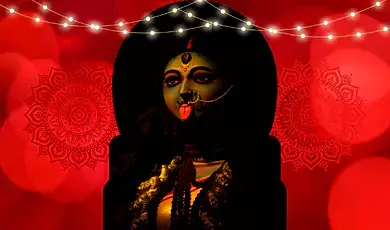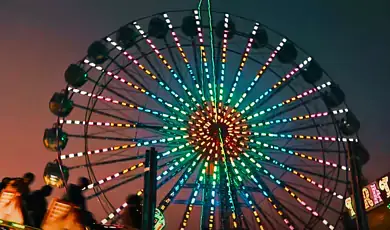Bengal, a motherland of a wealthy artistic legacy, is house to resonant celebrations that significantly impact people's lives. In Bengal's traditions, these carnivals come alive with colours, music, and faith. They observe spiritual faiths and boost the importance of society, getting together people from all walks of life. Among the myriad West Bengal festivals, Durga Puja is at the top. Honoured with magnificence and spirit, it keeps the success of Goddess Durga over the devil Mahishasura. The lanes are decorated with lights, pandals are set up, and people partake in parades and blessings. Durga Puja is the most awaited event of the Bengalis year, a testament to the artistic significance of these carnivals.
Another significant festival in West Bengal is Kali Puja, which glorifies the goddess Kali. Marked during Diwali, it presents Bengal’s dedication to the goddess of passion and power. Homes and temples are adorned with lamps, and devotions are presented to desire blessings. This festival contributes to the artistic richness of the state. Saraswati Puja is a Bengal festival that remembers its variousness, praising the goddess of wisdom and knowledge. This festival is celebrated among students and educational organizations. It is a day of belief as people pursue wisdom and understanding through their blessings. Saraswati Puja brings a touch of spirituality to Bengal’s prosperous celebration of civilization.
Jagaddhatri Puja, a famous festival in West Bengal, particularly in Chandannagar, praises unity and faith. Like Durga Puja, it has its special customs and traditions. The people of West Bengal come together to observe this celebration, serving the streets of Chandannagar with adorning lights and joyous joy. The famous festival calendar of West Bengal is a testament to the accord and faith shown during these festivals, enhancing the artistic fabric of Bengal. These celebrations are not just about traditions but also about observing life, art, and togetherness.
| Sr. No. | List of Festivals in West Bengal | More Information |
|---|---|---|
| 1 | Kali Puja | |
| 2 | Poila Boishakh | |
| 3 | Poush Mela | |
| 4 | Bhai Phonta | |
| 5 | Dol Purnima | |
| 6 | Vishwakarma Puja | |
| 7 | Jamai Shashti | |
| 8 | Basanti Puja | |
| 9 | Nabanna | |
| 10 | Ganga Sagar Mela | |
| 11 | Mahalaya | |
| 12 | Ratha Yatra | |
| 13 | Tusu Parab | |
| 14 | Charak Puja | |
| 15 | Raash Mela | |
| 16 | Jhapan |






















